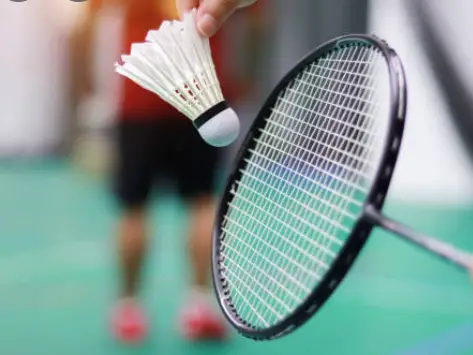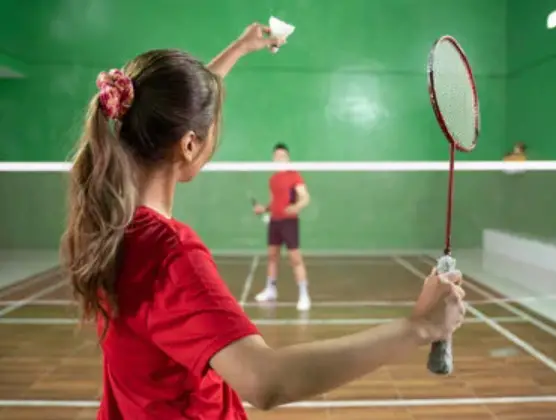Badminton is a popular racquet sport played by millions of people around the world. It requires quick reflexes, agility, and precision to be successful. However, even the best players can make mistakes, and one of the most common mistakes in badminton is committing a fault.
So, what is a fault in badminton? A fault is an infraction of the rules that results in a point being awarded to the opponent. There are several types of faults that players can commit, and understanding these rules is crucial for playing a fair and competitive game. In this article, we will explore the different types of faults in badminton and how they are enforced.
What Are Common Types Of Faults In Badminton?
- Contact Fault
Contact fault in badminton refers to a violation of the rules in which a player touches the shuttlecock with their body, clothing, or racket while serving or returning the shuttlecock. This can include hitting the shuttlecock with any part of the body or having any part of the clothing or racket make contact with the shuttlecock. Contact fault is typically called by the umpire or line judges and results in a point being awarded to the opposing team.
- Over the Net Fault
The over-the-net fault is a rule violation in badminton that occurs when a player hits the shuttlecock over the net and it does not land within the designated area on the opponent’s side of the court. This can occur when a player hits the shuttlecock too high or too far, or if they hit it out of bounds. If an over-the-net fault occurs, the point is awarded to the opponent.
- Service Fault
Service fault in badminton is a violation that occurs when the player serving the shuttlecock fails to serve it correctly. This can occur for a variety of reasons, such as:
- The shuttlecock is not hit cleanly and does not travel over the net
- The player serving does not serve from the correct position on the court
- The player serving does not serve the shuttlecock in an upward direction
- The player serving hits the shuttlecock out of bounds
If a service fault is called, the player who served the shuttlecock loses the serve and the other player gets to serve. A player can also be called for a service fault if they serve before the receiving player is ready.
- Receiver Fault
Receiver fault in badminton occurs when the player receiving the serve makes an error in receiving the serve. This can include failing to return the services within the designated area, returning the serve out of bounds, or hitting the serve into the net. Receiver fault is a common occurrence in badminton, as the service is an important aspect of the game and can be difficult to return accurately. Players who consistently make receiver faults may struggle to win points and matches against more skilled opponents.
- Double Hit
Double hit in badminton refers to when a player hits the shuttlecock twice in a single rally. This is considered a fault and results in a point for the opponent. Double hit can occur intentionally or unintentionally, and it is generally considered a mistake as it is difficult to control the shuttlecock accurately with two hits. Double hit can occur when a player tries to hit a shuttlecock that is too high or too close to their body, or when they are not able to reach the shuttlecock with a single hit.
What Are The Consequences Of Committing A Fault?
There are several consequences for committing a fault in badminton, including:
- Loss of a point: If a player commits a fault during play, the opposing player is awarded a point.
- Disqualification: If a player commits a serious fault or violates the rules of the game, they may be disqualified from the match.
- Loss of a game: Depending on the severity of the fault, a player may lose an entire game as a result.
- Loss of a match: If a player commits multiple faults during a match, they may ultimately lose the match as a result.
- Disciplinary action: Depending on the nature and severity of the fault, a player may face disciplinary action from the governing body of badminton. This could include fines, suspensions, or even bans from future competitions.
How To Avoid Commiting Faults
Here are some tips on how to avoid committing faults in badminton:
- Pay attention to the serve: Make sure you are serving from the correct side of the court and that the shuttle lands within the boundaries of the service court.
- Stay within the court boundaries: Do not step out of bounds or hit the shuttle out of bounds during a rally.
- Keep the shuttle over the net: Avoid hitting the shuttle into the net or under the net.
- Keep the shuttle within reach: Do not hit the shuttle out of your opponent’s reach or hit it too high.
- Avoid hitting the shuttle twice: Do not hit the shuttle more than once during a rally or hit it with any part of your body except your racket.
- Avoid interference: Do not obstruct your opponent’s view or swing during a rally.
By following these tips and practicing good sportsmanship, you can avoid committing faults in badminton and improve your skills as a player.
Conclusion
In conclusion, faults in badminton can occur for various reasons and can significantly impact the outcome of a game. These faults include serving faults, foot faults, and net faults. It is important for players to be aware of and avoid committing these faults in order to play a fair and competitive game. Additionally, officials and judges should be vigilant in enforcing these rules to ensure the integrity of the game. Overall, faults can be a frustrating aspect of badminton, but with proper knowledge and understanding, they can be avoided and the game can be enjoyed by all players.







